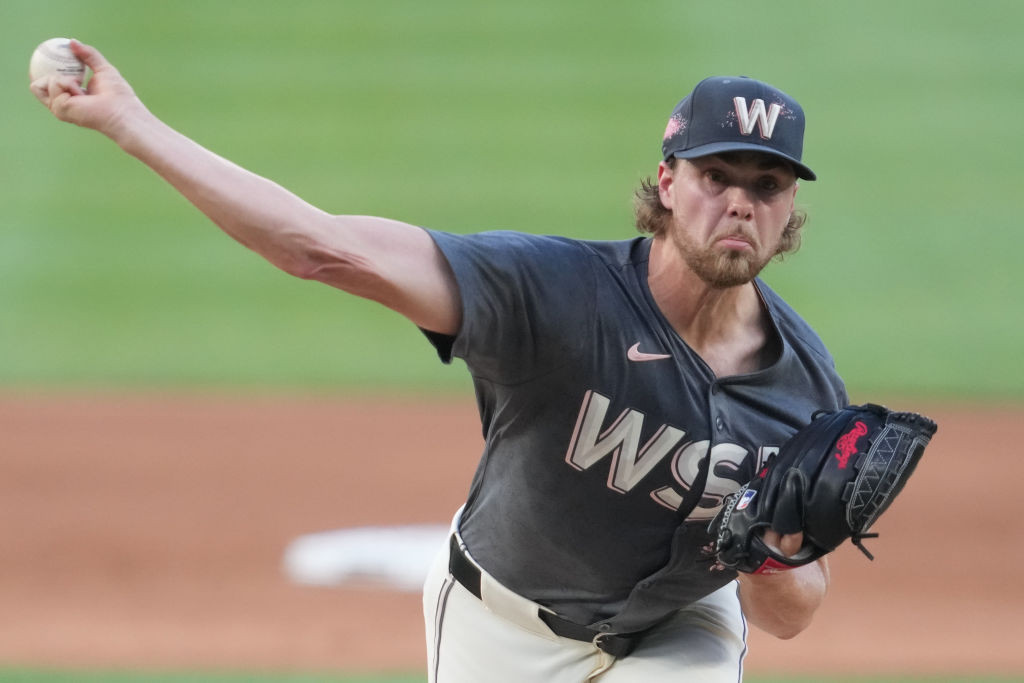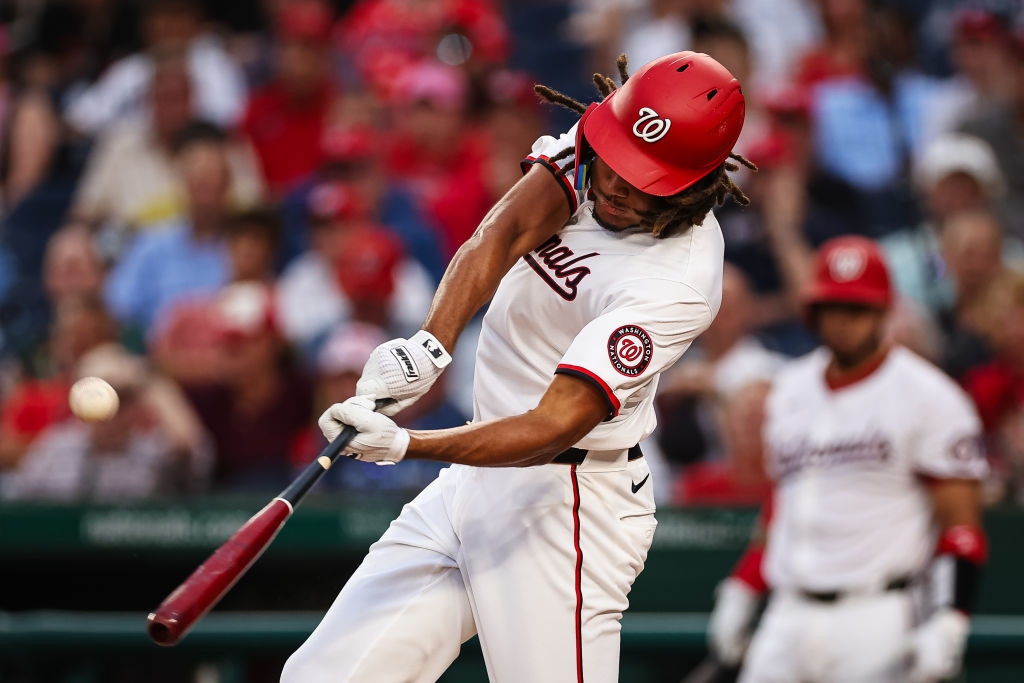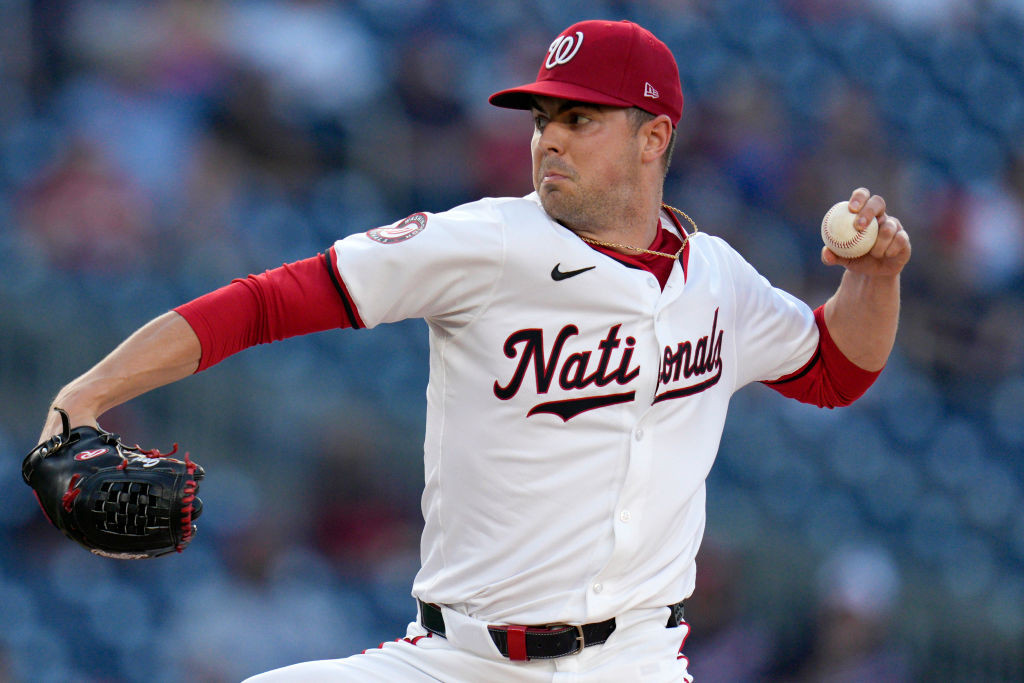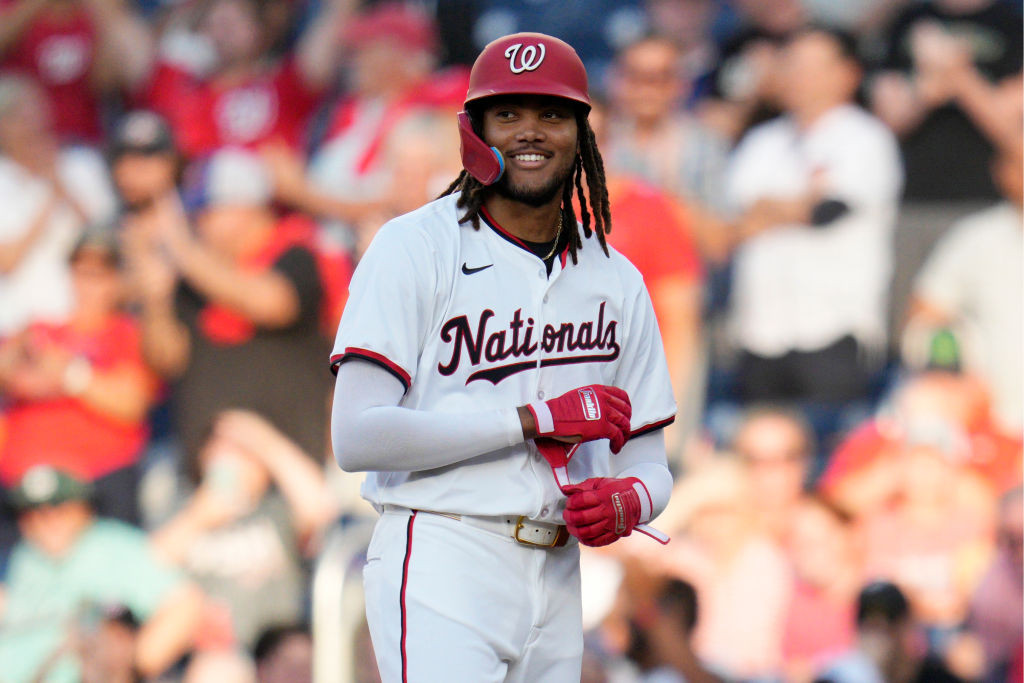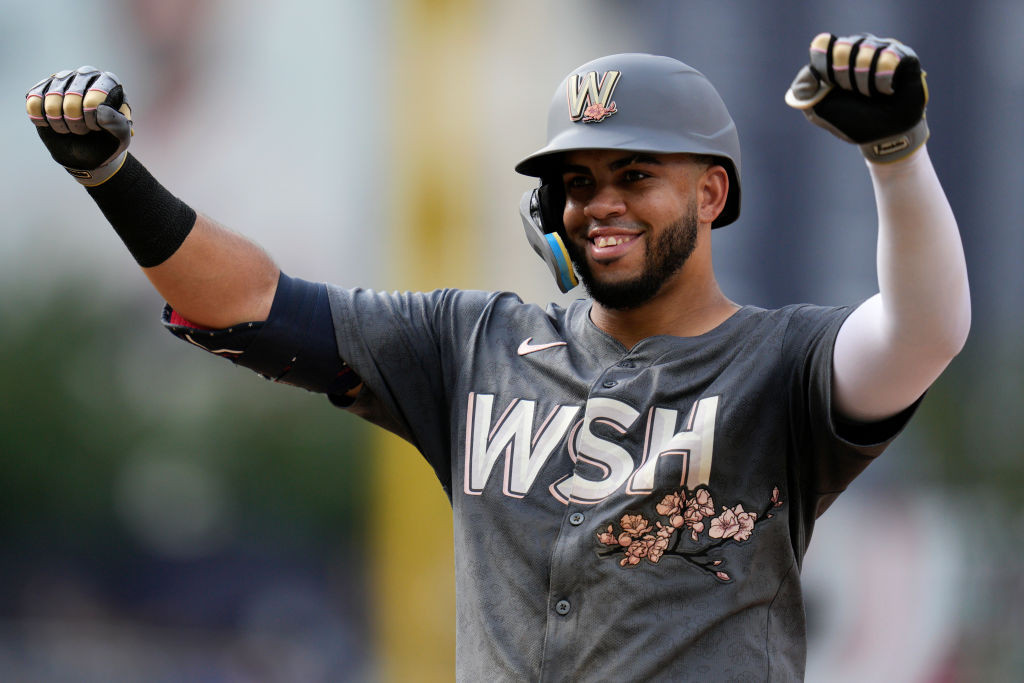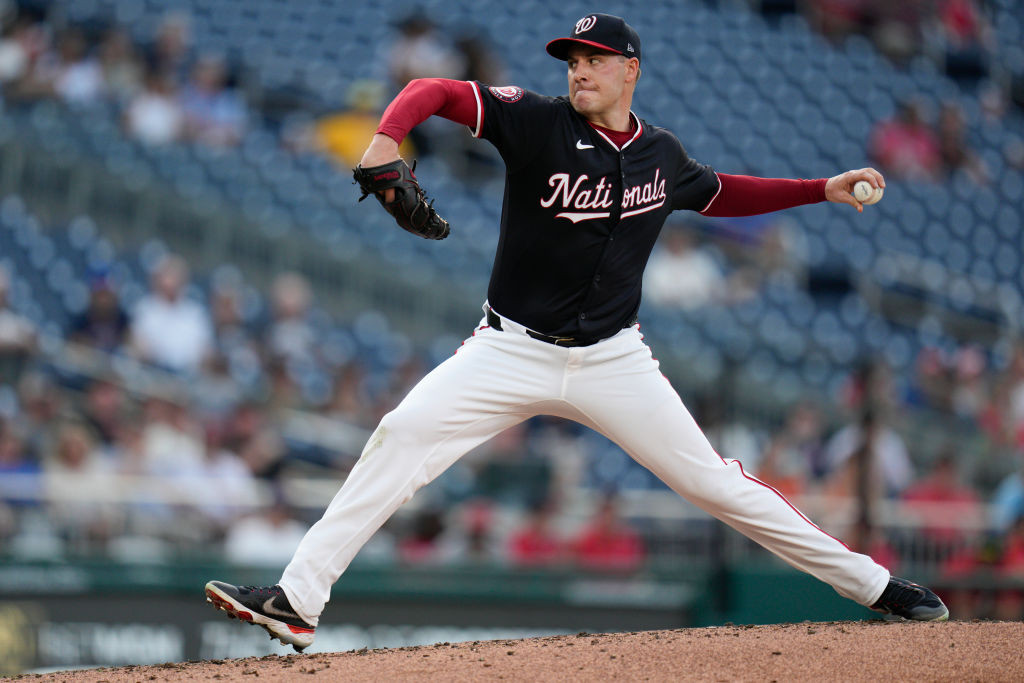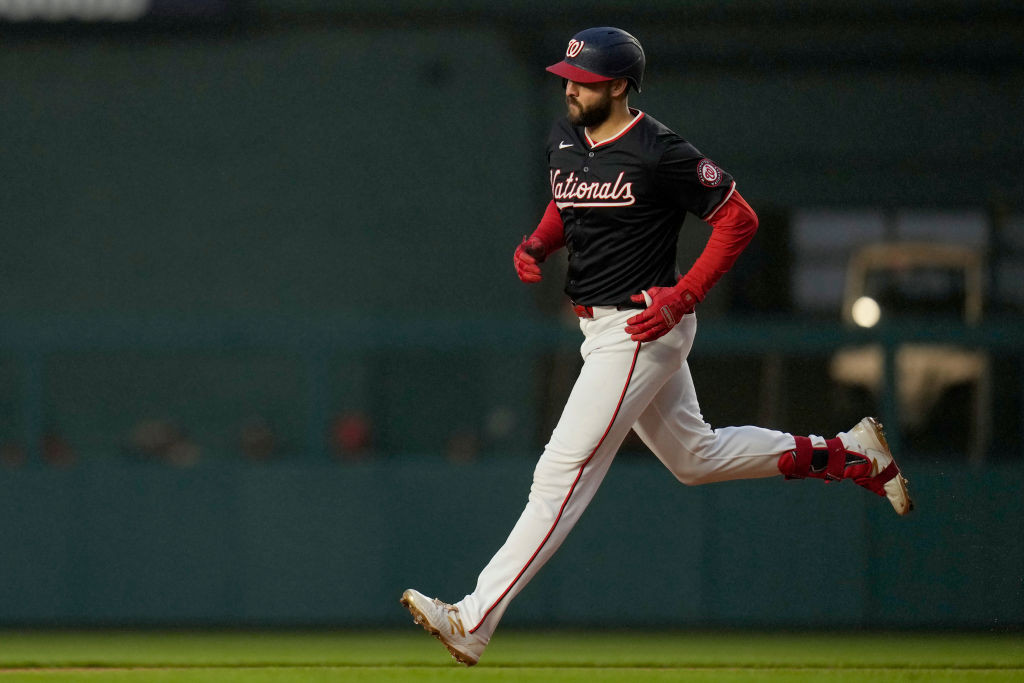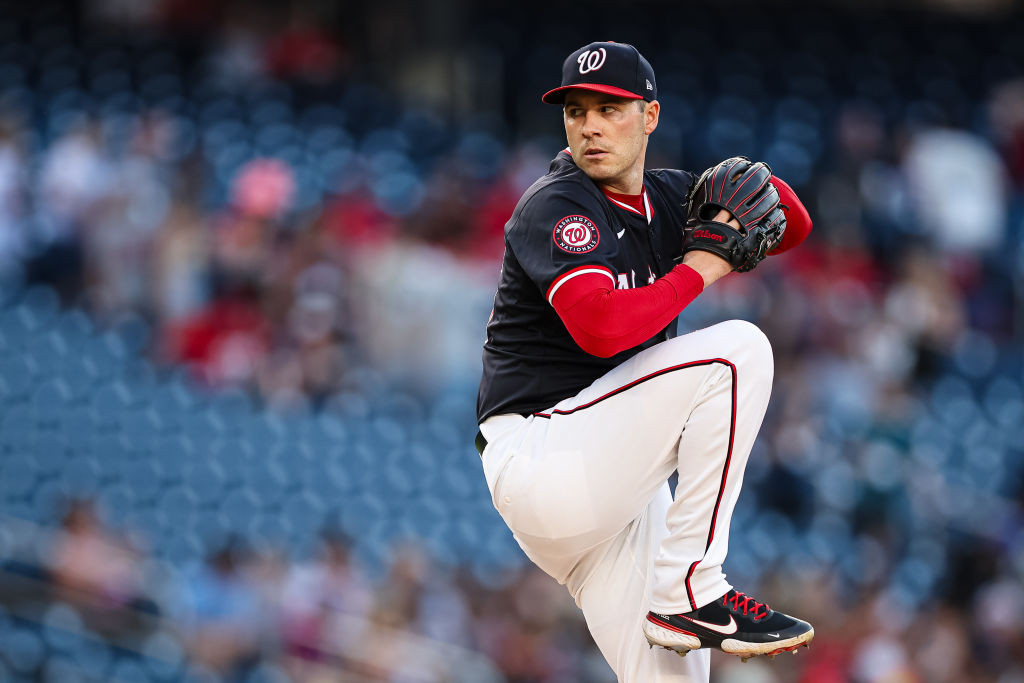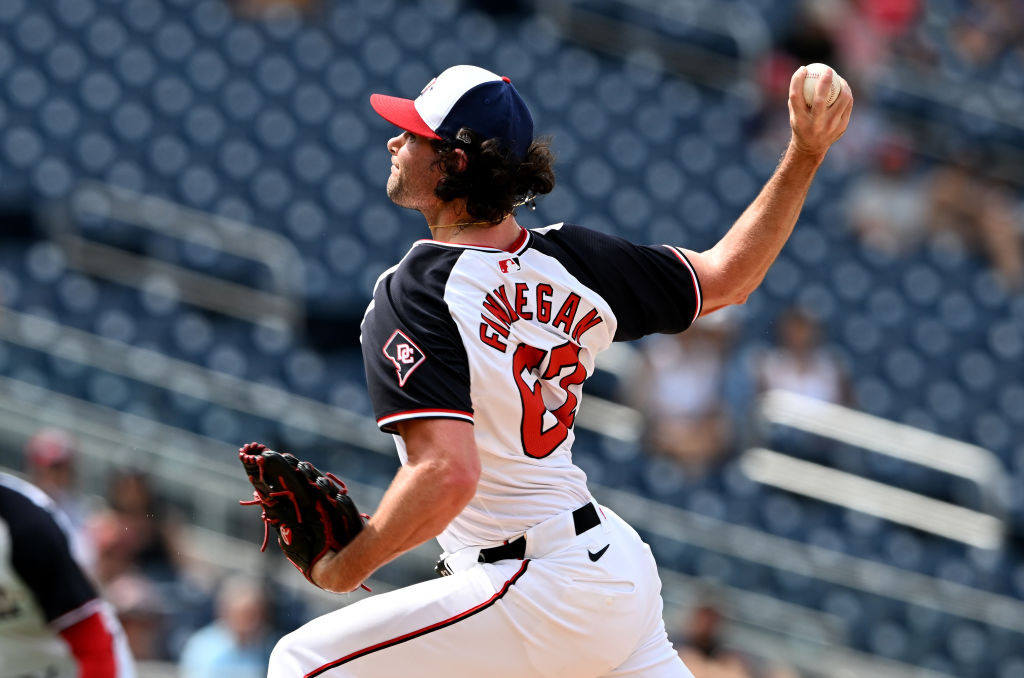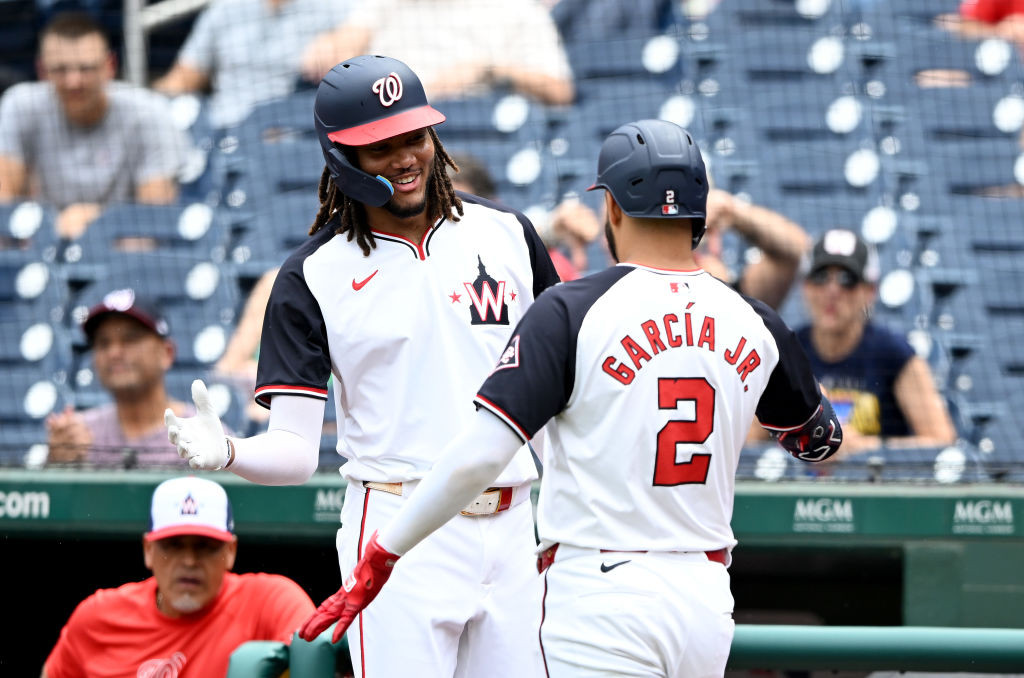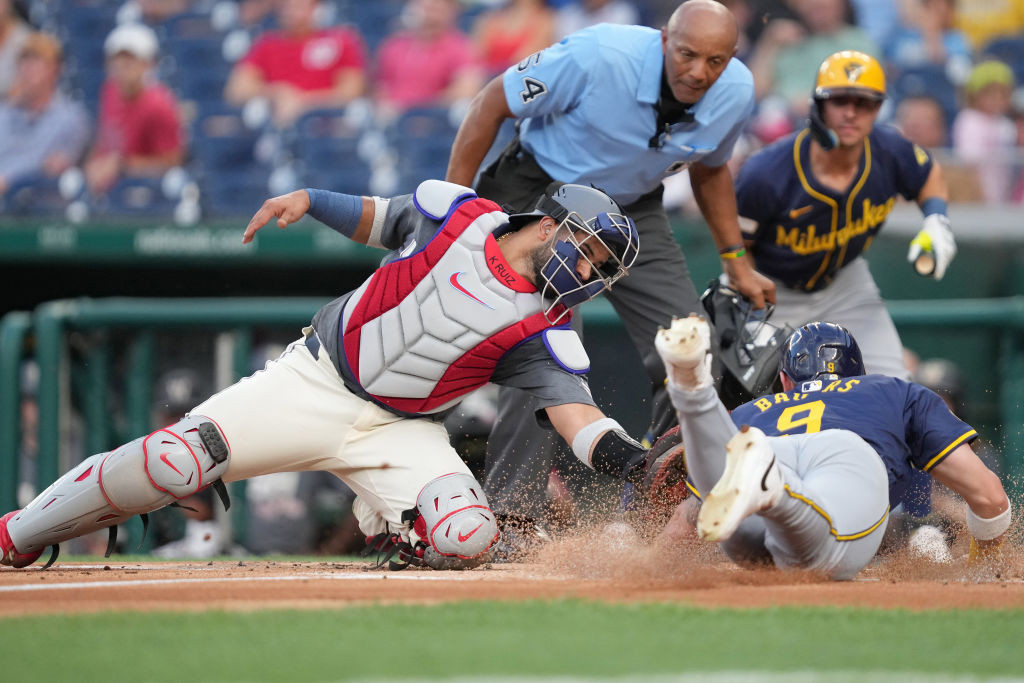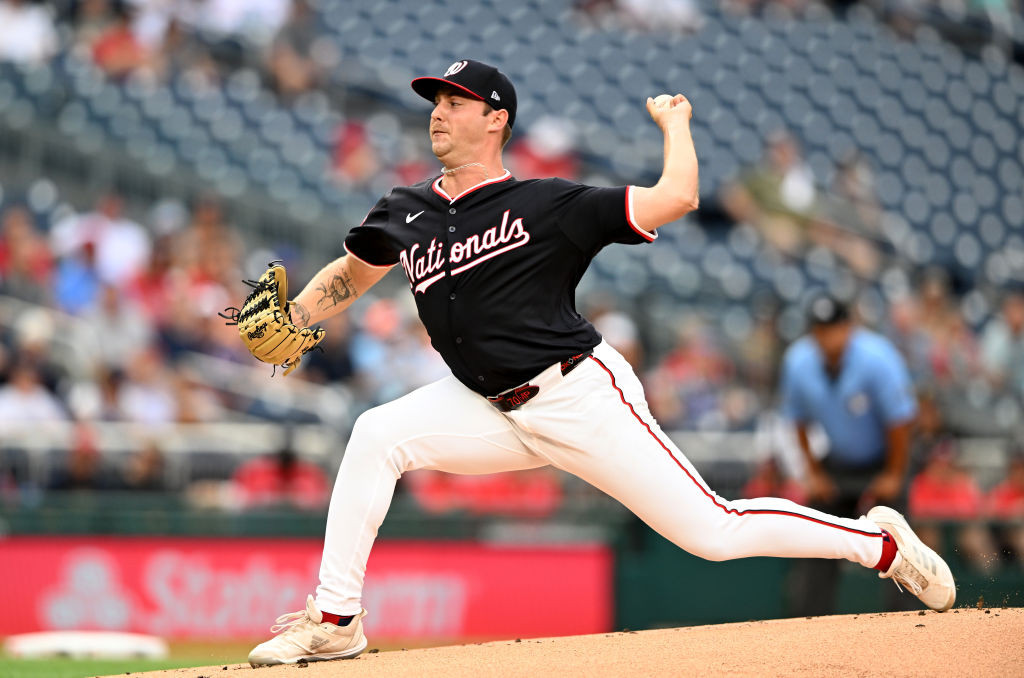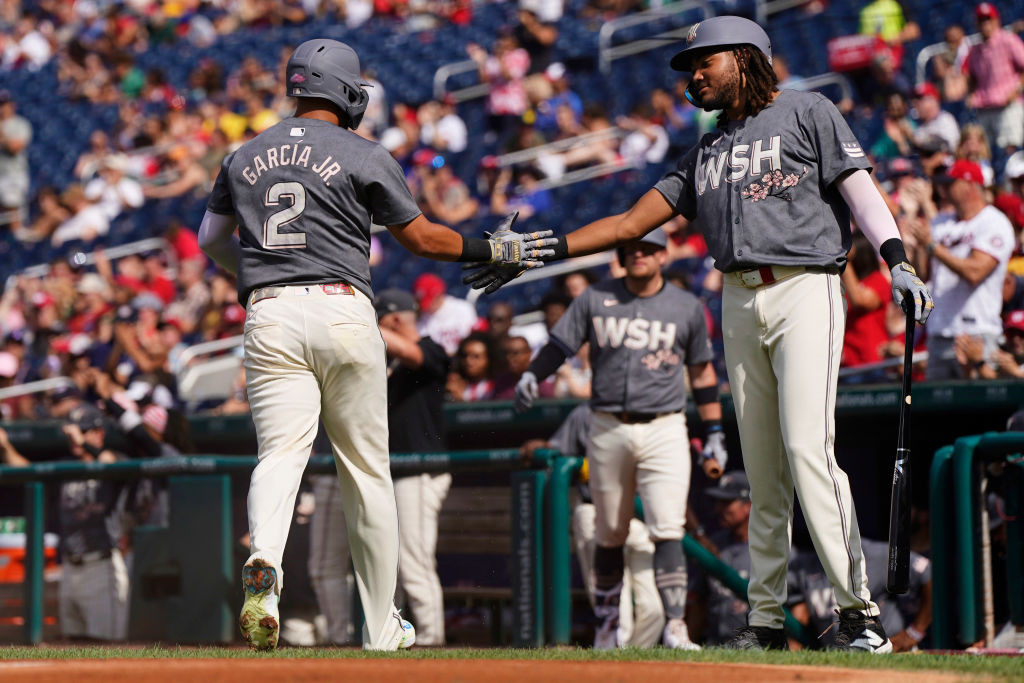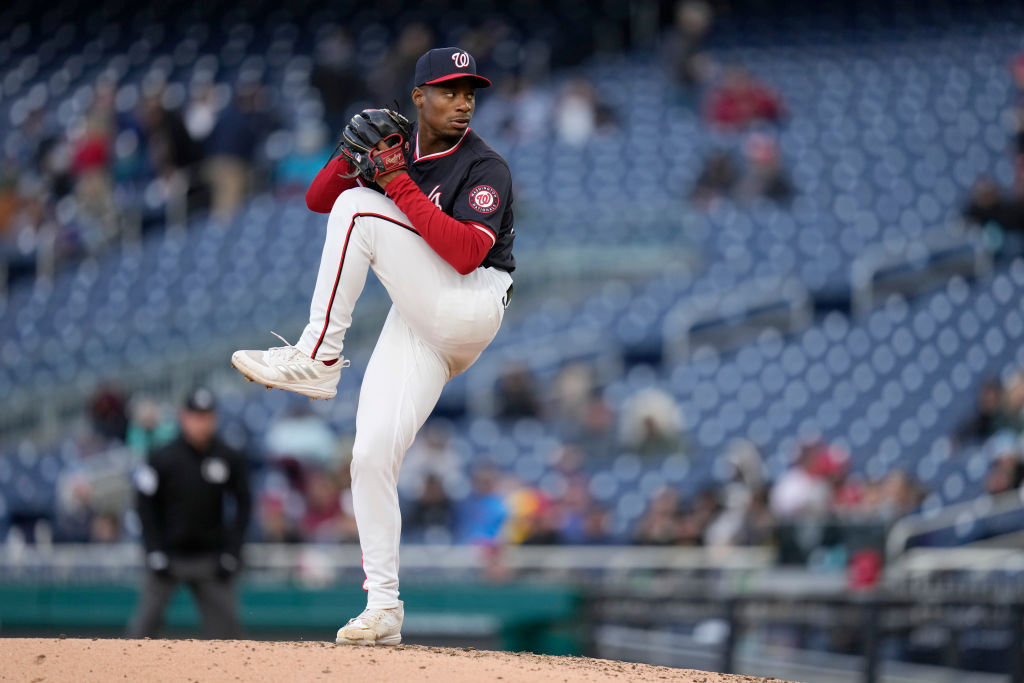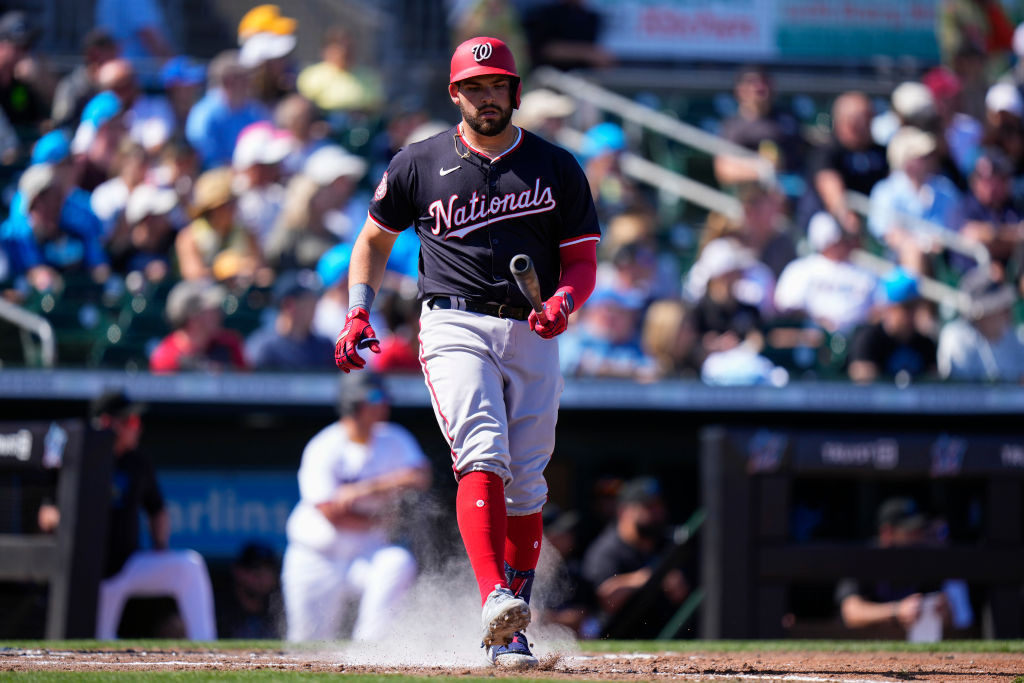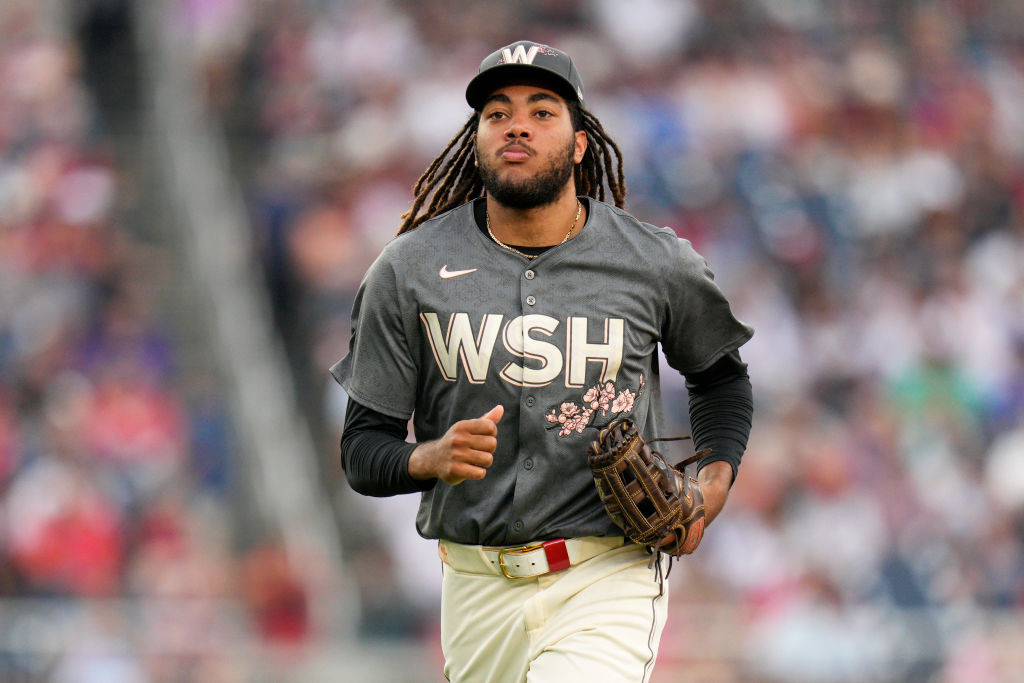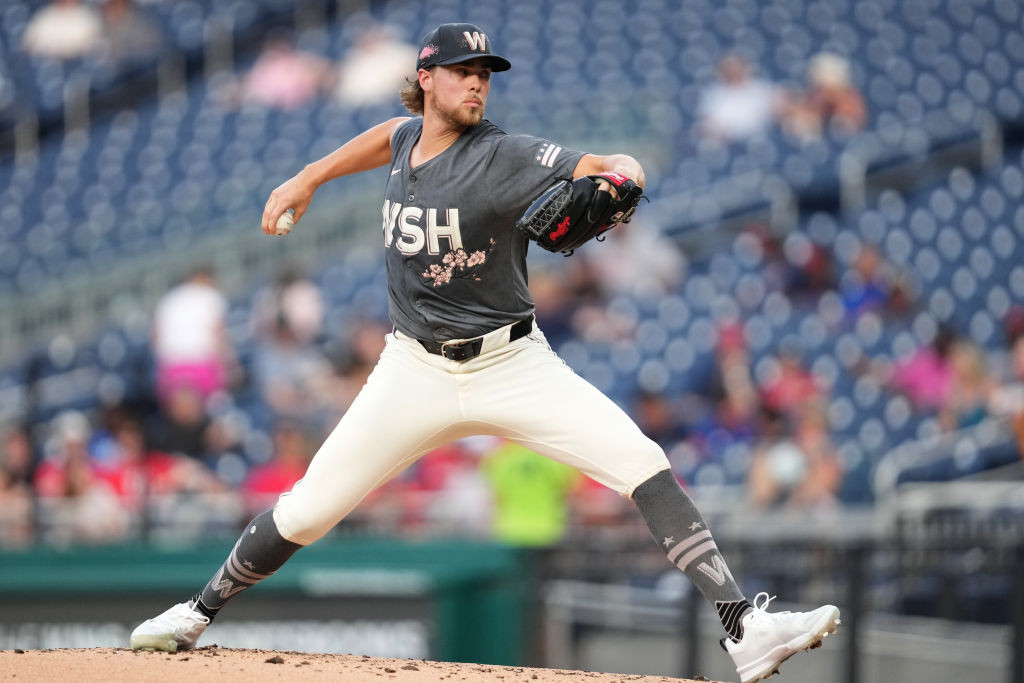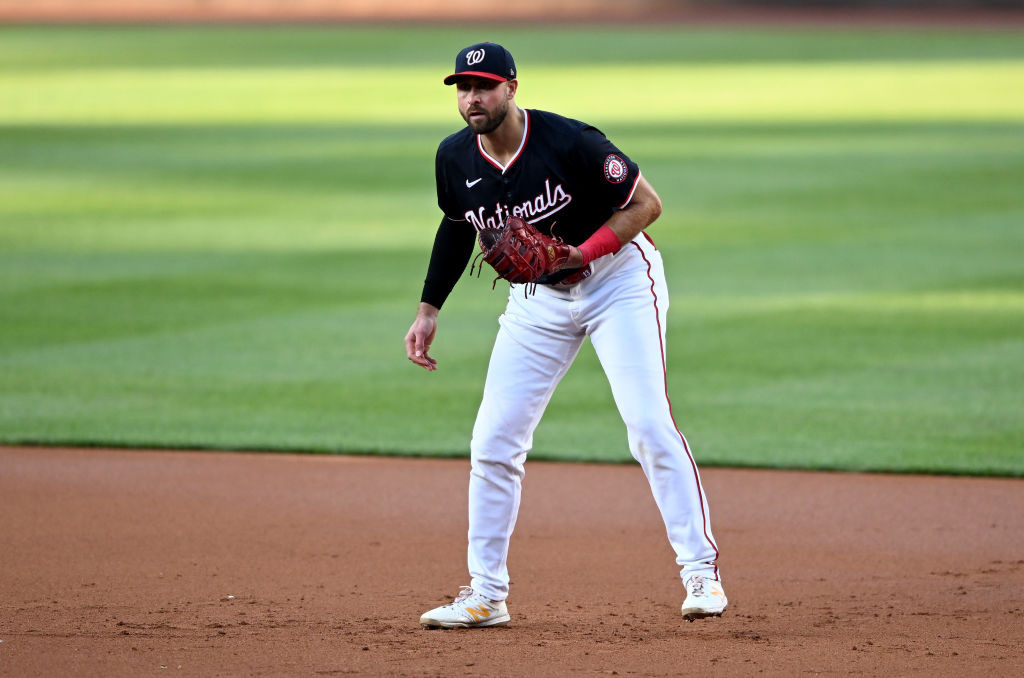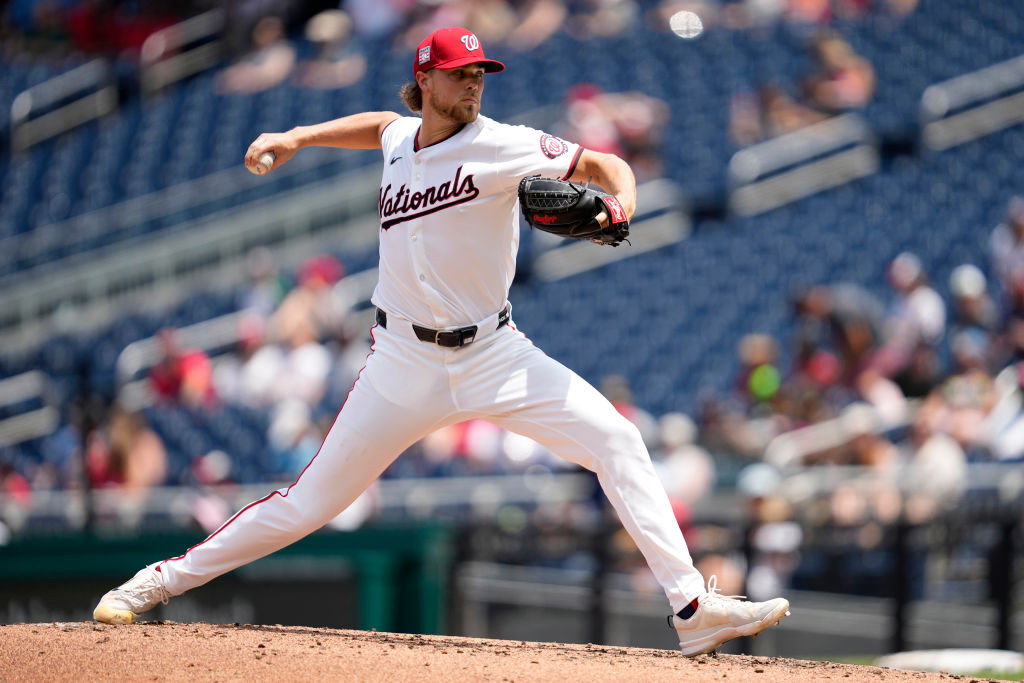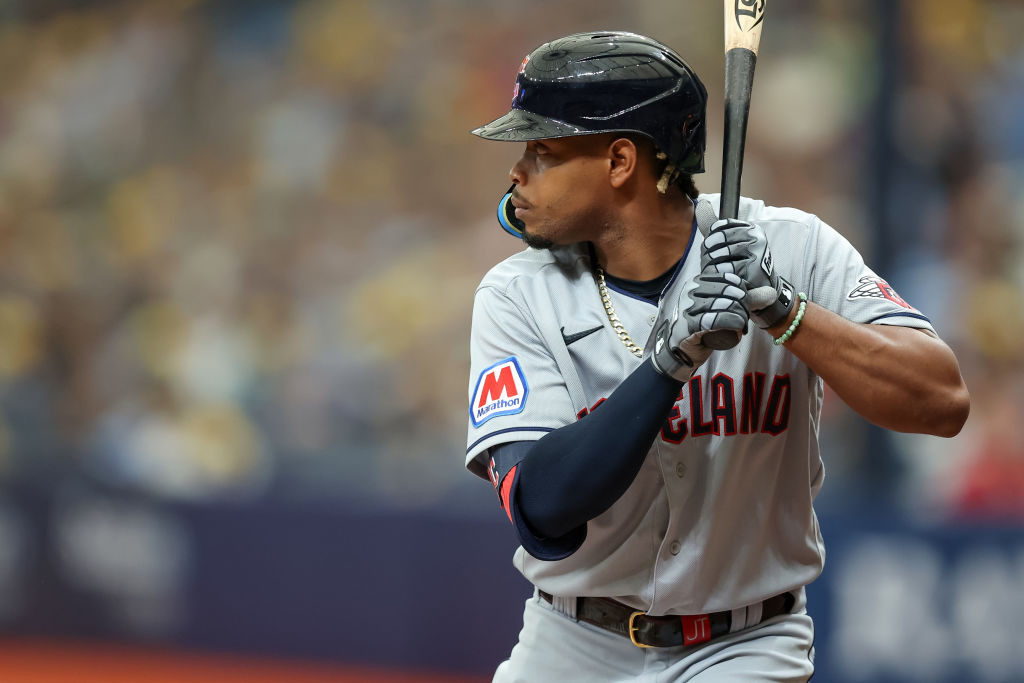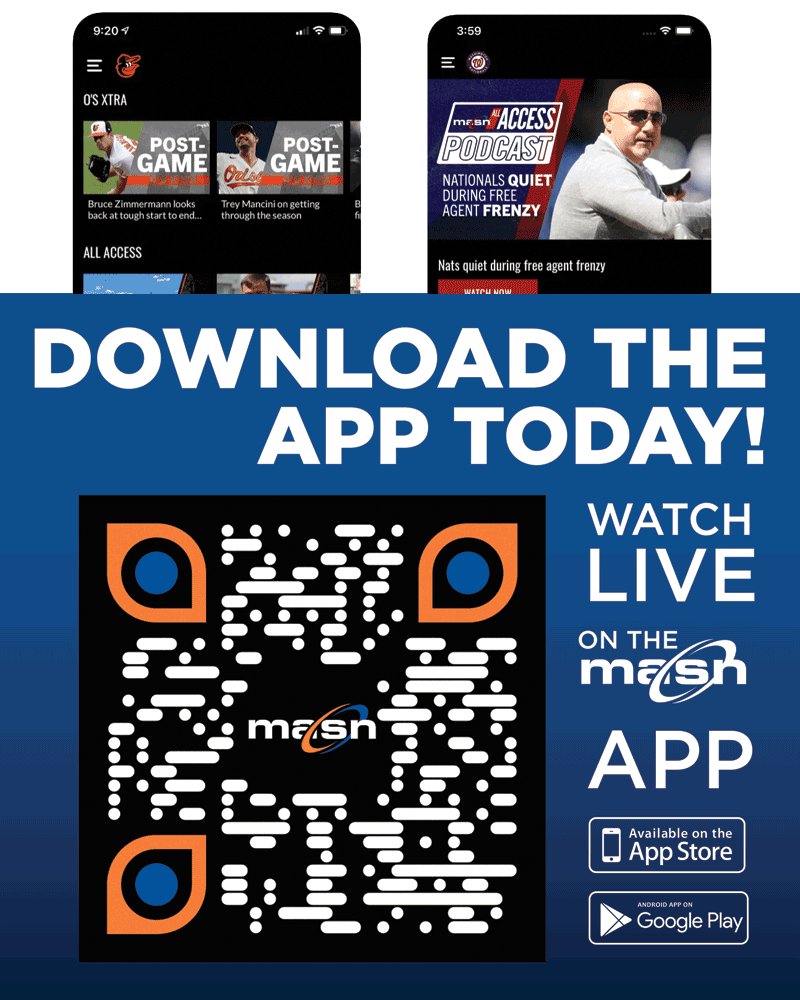It’s been a brutally hot summer here, but it hasn’t rained all that much. At least, not enough to have a major impact on Nationals games. That may change over the next three days, with what’s left of Hurricane Debby making its way up the coast and projected to impact the region from later this evening through sometime Friday. The Nats already announced Thursday’s series finale against the Giants has been moved from 4:05 p.m. to 12:05 p.m. in hopes of beating the rain. It remains to be seen if that proactive move will actually pay off. Fingers crossed.
First up, though, is tonight’s regularly scheduled 6:45 p.m. game, and the Nats face a daunting challenge in Blake Snell. The reigning National League Cy Young Award winner no-hit the Reds five days ago, the first time in his career he tossed a complete game. And that was merely the culmination of an utterly dominant stretch: Over his last five starts, Snell has allowed two runs on eight hits, striking out 41 over 33 innings. Yes, the Nats had a big night at the plate Tuesday. That may have no impact on their performance tonight.
Jake Irvin will need to be the best version of himself to give his team a chance tonight. The right-hander got off to a rough start in last outing, allowing three early runs to the Brewers. But he salvaged it and wound up allowing only one more run in 5 2/3 innings. He faced the Giants twice last season and was excellent: three runs, 10 hits, 14 strikeouts over 13 innings.
WASHINGTON NATIONALS vs. SAN FRANCISCO GIANTS
Where: Nationals Park
Gametime: 6:45 p.m. EDT
TV: MASN, MLB.tv
Radio: 106.7 FM, 88.7 FM (Spanish), MLB.com
Weather: Rain arriving, 80 degrees, wind 10 mph in from right field
NATIONALS
SS CJ Abrams
RF Alex Call
1B Juan Yepez
DH Harold Ramírez
2B Ildemaro Vargas
LF James Wood
C Riley Adams
CF Jacob Young
3B Trey Lipscomb
The ball went soaring off James Wood’s bat and made a beeline for left-center field at Nationals Park, clearing the wall and clearing the red seats that reside in that one area of the stadium, finally coming back to earth at the picnic tables stationed behind the seats.
It’s the kind of territory only a handful of players have ever reached in an actual game since the park opened in 2008. And here was Wood, a 21-year-old rookie, a left-handed hitter, doing it.
“I definitely got it on the barrel,” he said.
Uh, yeah, he most definitely did. Wood’s eighth-inning homer during the Nationals’ 11-5 thumping of the Giants on Tuesday night was his most impressive to date in the big leagues, a 423-foot shot to the opposite field to cap a big-time offensive performance.
Wood had already tripled off the left field wall in his first at-bat, then drawn two walks and stolen two bases before stepping to the plate in the bottom of the eighth. Facing San Francisco right-hander Sean Hjelle, who at 6-foot-11 is one of the only players in the majors who actually dwarfs him, the 6-foot-7 Wood got a 94-mph sinker on the inner-third of the plate, belt-high and absolutely crushed it.
It’s not exactly the way anyone wants this to go, but the Nationals are developing a penchant for surviving disastrous first innings from their starters and finding ways to come back and win at the end of the night.
A sustainable formula for long-term success? No. But they’ll take what they can get right now, and they’ll gladly take tonight’s 11-5 victory over the Giants, in which MacKenzie Gore once again dug his teammates into a hole and those teammates proceeded to dig their way out.
A four-run top of the first against Gore seemed to spell doom for the slumping left-hander and created a big uphill climb for the rest of the Nationals. But they immediately stormed back to take the lead one inning later, then kept hitting against San Francisco’s pitching staff and actually gave their bullpen some cushion for the later innings.
"We went from real gloomy," manager Davey Martinez said, "to boom."
The first big swing came from shortstop CJ Abrams, who led the way with a much-needed, three-run homer during a five-run bottom of the second. Keibert Ruiz also homered, as did James Wood, who reached the picnic tables in left-center in the bottom of the eighth after already tripling, drawing two walks and stealing two bases to complement a well balanced offensive attack from the same lineup that scored only one run Monday night against Logan Webb and the Giants bullpen.
If you create a short list of Nationals players for whom the season’s final two months are especially important, MacKenzie Gore would certainly be included. The left-hander had a really strong opening two months, producing a 2.91 ERA and 1.278 WHIP in 11 starts. His last 11 starts, though, haven’t come close to that level: a 6.36 ERA and 1.758 WHIP.
So, which version of Gore will we see in August and September? The answer to that question could go a long way toward shaping everyone’s vision of what the 25-year-old really is heading into next season. He was better last week in Arizona, though still not great. An even better showing tonight against the Giants would be a nice indicator of an upward trend for him.
The Nationals would also love to provide Gore with some run support. To do so, they’ll have to take down a foe none of them has ever seen before. Hayden Birdsong, a 22-year-old rookie in only his third professional season, gets the start tonight. The right-hander has been quite good, with a 2.51 ERA and 1.169 WHIP in 13 starts at Double-A and Triple-A before making his major league debut, then a 2.97 ERA and 1.220 WHIP in six starts since arriving. He strikes out a lot of batters (11.3 per nine innings) but he also walks a lot of batters (4.5 per nine innings).
WASHINGTON NATIONALS vs. SAN FRANCISCO GIANTS
Where: Nationals Park
Gametime: 6:45 p.m. EDT
TV: MASN, MLB.tv
Radio: 106.7 FM, 88.7 FM (Spanish), MLB.com
Weather: Partly cloudy, 90 degrees, wind 13 mph out to left field
NATIONALS
SS CJ Abrams
1B Juan Yepez
2B Luis García Jr.
C Keibert Ruiz
LF James Wood
DH Travis Blankenhorn
RF Alex Call
3B Ildemaro Vargas
CF Jacob Young
The trade deadline has passed, and what an eventual deadline it was for the Nationals this year. Four key veterans (Hunter Harvey, Lane Thomas, Jesse Winker, Dylan Floro) were traded for a horde of prospects, none of whom are in the big leagues yet. That leaves the Nats with a very different roster than they had a few weeks ago, with some obvious holes in both their lineup and their bullpen that have been difficult to adequately fill so far.
There are still nearly two months to go, though, and quite a bit still at stake for a number of players who are trying to secure their place on the roster of a 2025 team that still seems to believe it can contend if the right pieces are in place. That, for better or worse, is going to be the focus the rest of the way.
It's been a while since we did one of these Q&A's, so let's get back on the horse and give it a try. If you have a question you'd like to ask, please submit it in the comments section below, then check back throughout the morning for my responses ...
Twelve seconds. It took all of one dozen seconds for the air to be sucked out of Nationals Park this muggy Monday evening, the time between Patrick Corbin’s first pitch to Tyler Fitzgerald and his second pitch to the Giants leadoff man.
The first one was innocuous enough, a 91 mph sinker that caught the outer edge of the strike zone to give Corbin the early advantage. Then came the second one, another 91 mph sinker, this one over the plate and at the knees.
Fitzgerald took a mighty whack at it, the crack of the bat echoing throughout the ballpark, the ball soaring 416 feet to left field for a game-opening homer that set the tone for what would end up a 4-1 loss by the Nationals that felt like it was decided 12 seconds in.
What already loomed as a tough matchup on paper – Logan Webb vs. a groundball-hitting Nats lineup, Corbin on the heels of a disastrous start in Arizona, with a depleted bullpen behind him – only grew more daunting when the Nationals’ beleaguered left-hander dug his team into an immediate 1-0 hole.
"First batter of the game, if that happens, there's a lot of game left," Corbin said of Fitzgerald, who has 11 homers in his last 17 games. "Sometimes it takes you a pitch or two to locate your fastball. It's just unfortunate that he hit that one out of the ballpark."
Joey Gallo is finally ready to start playing in games again. Minor league games, to be sure, but games nonetheless.
Gallo, out nearly two months with a strained left hamstring, is set to begin a rehab assignment Tuesday with Triple-A Rochester, which could put the big slugger on track to rejoin the Nationals’ major league roster next week.
The 30-year-old is expected to play five innings at first base Tuesday when the Red Wings open a six-game road trip in Buffalo. He’ll then serve as designated hitter Wednesday, then play right field Thursday.
With the Nationals needing outfield help after the trades of Lane Thomas and Jesse Winker, and with Juan Yepez having hit well since taking over at first base last month, Gallo could wind up seeing more time in right field once he returns from the injured list.
“We’ll see how things go,” manager Davey Martinez said. “I love him playing first base; he’s done really well over there. But there will be some times when I might have to put him right field, so I want him to get some reps out there.”
The Nationals just took two of three from a good Brewers team, and that made for an encouraging weekend. Now comes another tough challenge, though, with a four-game series on tap against the Giants, who are keeping themselves in the wild card race by winning seven of their last nine (one of those wins a no-hitter by Blake Snell).
Snell is scheduled to start Wednesday night, so there’s two games to play before that. Tonight’s San Francisco starter is no slouch: Logan Webb, the workhorse right-hander who consistently leads the league in innings pitched and in his last start went the distance, shutting out the Athletics on 106 pitches for a 1-0 win. The Nationals missed Webb earlier this year out west, so this is going to be the first time many of these young hitters see him.
Patrick Corbin did not throw a shutout in his last start. Not even close. The left-hander lasted only three innings against the Diamondbacks while giving up 11 runs, most ever by a Nats pitcher. There’s not much left to say about Corbin at this point, except to say he’s got to give them more length tonight and give them a chance. Even if he does, the bullpen could be in really shaky shape after Derek Law and Kyle Finnegan each pitched the last two days.
WASHINGTON NATIONALS vs. SAN FRANCISCO GIANTS
Where: Nationals Park
Gametime: 6:45 p.m. EDT
TV: MASN, MLB.tv
Radio: 106.7 FM, 88.7 FM (Spanish), MLB.com
Weather: Partly cloudy, 92 degrees, wind 9 mph out to left field
NATIONALS
SS CJ Abrams
1B Juan Yepez
2B Luis García Jr.
C Keibert Ruiz
LF James Wood
DH Travis Blankenhorn
RF Alex Call
3B Ildemaro Vargas
CF Jacob Young
One week ago, Kyle Finnegan blew a four-run lead in Arizona, then had to sweat out the final 24 hours prior to the trade deadline before learning the Nationals were retaining him. It was an emotional couple of days for the Nationals closer, who found himself suffering his worst loss of the year while simultaneously worrying about where his next appearance would come.
That next appearance finally came Saturday, when Davey Martinez summoned Finnegan for a four-out save against the Brewers. And that was followed immediately on Sunday, when Finnegan recorded the final three outs of a 4-3 victory to cap a wild week with a decidedly upbeat conclusion.
“That’s the life of relief pitching,” he said. “It can be a bit of a roller coaster at times. You’re going to have good outings, bad outings. And you’ve just got to stay the course. I had a rough one in Arizona, but we always bounce back. And I’m happy to have two good outings under my belt and put it behind me.”
Both last Monday’s outing against the Diamondbacks and Saturday’s game against the Brewers saw Finnegan inherit a four-run lead. The cushion Sunday was merely one run, leaving no margin for error. And when he lost a seven-pitch battle with Rhys Hoskins, who delivered a leadoff single to right to begin the ninth, the pressure ratcheted up right away.
Finnegan, though, made quick work of the rest of the inning. He got Blake Perkins to fly out on the second pitch he saw. Then he went right after Brice Turang and got him to hit a ground ball on the second pitch he saw for the game-ending double play.
The situation practically begged for James Wood to do something big. Though the Nationals were leading at the time, the prospect of pulling off a 1-0 victory given the current state of their bullpen felt risky at best.
So here was a golden opportunity to extend that lead: Bases loaded, one out in the bottom of the sixth, Wood at the plate as the crowd tried to will the rookie outfielder to a clutch hit.
And when Wood’s sinking liner to left got past a diving Jackson Chourio and rolled all the way to the wall, that crowd roared as four Nationals sprinted around the bases, three of them scoring in front of Wood, who stopped at third with the clutch triple that proved the difference in a tight, 4-3 victory and a series win over the Brewers.
"That was a big moment, and he came through," manager Davey Martinez said of his 21-year-old phenom. "The kid's going to be OK."
It was the latest in a string of clutch hits by Wood, the 21-year-old phenom whose first month in the big leagues has featured plenty of ups and downs and still leaves much to be desired. But what Wood has lacked in consistency, he has made up for in frequently rising to the occasion in big spots.
When he had to come out of Wednesday’s series finale in Arizona after getting struck by a foul ball in the groin, Keibert Ruiz figured to be uncertain for Friday’s series opener in Washington. In the end, Ruiz didn’t just start that game against the Brewers. He’s started all three games this weekend.
Feeling strong physically, and performing better at the plate recently, Ruiz is back in the lineup this afternoon. The second time he’s caught a day game after a night game in the last week.
“He’s doing well. He’s playing well,” manager Davey Martinez said. “I just want to continue to get him out there. We’re trying to get him going; he’s been swinging the bat a lot better, so I’m trying to keep him and get him locked in.”
Ruiz’s last day off came Sunday in St. Louis, though even then he wound up as a late-game replacement for Riley Adams. He then started all three games in Arizona, though he departed the last two early (once because the game was a blowout, the other time because of the unfortunately located foul ball).
Because he had to be hospitalized two years ago when a similar incident occurred, the Nationals were initially worried about Ruiz’s status. But he insisted this one wasn’t nearly that bad, so he was back to work Friday night when the team returned home. He’s recorded a hit in each of this series’ first two games, including an RBI single during the Nats’ four-run first-inning rally Saturday evening.
The Nationals haven’t won a bunch recently. But when they have won, they’ve won in bunches. In fact, every time they’ve snapped a losing streak since July 12, they’ve followed that first win with another win. And if they can keep that pattern up today, they’ll wind up with a series victory over the Brewers, their second series win over the National League Central leaders in a month. At this point, you’ll take that, right?
Mitchell Parker faced Milwaukee in that previous series at American Family Field, and though the Nats wound up winning the game, his start was a disaster. That’s the day Parker failed to get out of the first inning. And he followed up that start with another short one against the Padres. Fortunately, he bounced back in Arizona with five innings of two-run ball, so he should enter this one feeling better about himself.
The Nationals jumped all over Aaron Civale in the first inning Saturday. They’ll try to do the same today against a brand-new face: Tobias Myers. The 25-year-old rookie has been pretty good for the Brewers, with a 3.10 ERA and 1.143 WHIP in 16 games (15 starts). And he’s allowed two or fewer earned runs in seven of his last nine outings, so the right-hander presents a real challenge today.
WASHINGTON NATIONALS vs. MILWAUKEE BREWERS
Where: Nationals Park
Gametime: 1:35 p.m. EDT
TV: MASN2, MLB.tv
Radio: 106.7 FM, 88.7 FM (Spanish), MLB.com
Weather: Chance of rain, 85 degrees, wind 7 mph out to center field
NATIONALS
SS CJ Abrams
1B Juan Yepez
2B Luis García Jr.
C Keibert Ruiz
LF James Wood
DH Travis Blankenhorn
RF Alex Call
CF Jacob Young
3B Trey Lipscomb
He’s not the most important player on the Nationals roster, and there are others who probably have more to prove over the next two months. But make no mistake, this is an important stretch for Luis García Jr., who would love nothing more than to continue what he’s done so far this summer throughout August and September and state once and for all the Nats should consider him their second baseman of the present and future.
It was exactly one year ago when the Nationals were quite unsure about that and optioned a slumping García to Triple-A to send him a message that he was assured of nothing. And the way manager Davey Martinez talked about him this spring, it seemed clear García still was assured of nothing and the organization wouldn’t hesitate to go in another direction at second base if he didn’t perform.
Four months later, García has done just about everything in his power to put those thoughts to rest. His defense is tremendously improved. And after an up-and-down first half at the plate, he’s now turning into one of the team’s most productive hitters, which he certainly proved this afternoon.
"It's definitely paying off for him," Martinez said. "I see a different kid. More confident. Understands what he needs to do. ... He's playing really well."
During a 6-4 victory over the Brewers that got a bit too tense late, García went 3-for-4 with a homer, a double, a single and a stolen base. By day’s end, the 24-year-old's offensive numbers for the season were creeping up on those of double play partner and National League All-Star CJ Abrams.
Josiah Gray stood in the clubhouse at Nationals Park, his right arm protected by a complex brace, only 10 days removed from major elbow surgery, and had no trouble smiling wide.
“I love seeing everybody,” he said. “I love still being a part of this, still being part of the team and rooting for our guys. Just seeing everybody’s face yesterday was settling.”
In these early days of recovery, there isn’t much for Gray to do from a rehab standpoint. He takes part in about one hour of physical therapy a day, but that’s all for now. It’ll be months before he’s allowed to throw a baseball again. It’ll be at least a year before he’s pitching in a big league game again, maybe longer.
Gray isn’t the first to have Tommy John surgery, nor will he be the last. He’s already consulted with a number of friends in the game who have been through this before – notably Cade Cavalli, Jake Irvin and Joe Ross – and learned some valuable lessons about the proper mental approach to his recovery.
“This is a long process, but also you can learn a lot about yourself in this process,” he said. “You can come out of it a better athlete, a better pitcher, a better person. … I’m looking forward to seeing where I’m at this time next year.”
It’s Harry Potter Day at Nationals Park, and hopefully one or two of these young wizards know how to cast a spell to prevent it from raining. Otherwise, there’s a decent chance of storms later this afternoon. Fingers crossed they somehow hold off and allow the Nationals and Brewers to play as scheduled at 4:05 p.m. with no interruption.
The Nats, plain and simple, need a win. They’ve dropped five in a row since winning two straight in St. Louis last weekend and now reside at a season-worst 12 games under .500. They were in Friday night’s game, which was tied 3-3 in the sixth before Milwaukee broke things open against the bullpen and made it 8-3.
So it’s up to DJ Herz to keep the Brewers lineup in check. This is his first start against those guys, because he was back at Triple-A Rochester when the Nationals visited Milwaukee before the All-Star break. Herz has been solid since returning to the majors, not to mention eerily consistent. In each of his two starts, he has allowed two runs over five innings while throwing 79 pitches. Davey Martinez would certainly take that again this afternoon, though Herz is welcome to be even better if he likes.
The Nats lineup faces a familiar foe, but one wearing a different uniform: Aaron Civale. The right-hander faced them as a member of the Rays on June 29, giving up two runs on six hits and four walks over 5 2/3 innings. Since then, he’s been traded to the Brewers, for whom he has produced a 4.29 ERA and 1.429 WHIP over four starts.
WASHINGTON NATIONALS vs. MILWAUKEE BREWERS
Where: Nationals Park
Gametime: 6:45 p.m. EDT
TV: MASN, MLB.tv
Radio: 106.7 FM, 88.7 FM (Spanish), MLB.com
Weather: Chance of rain, 92 degrees, wind 13 mph out to left
James Wood is an imposing force on a baseball field. The sport’s top prospect stands at 6-foot-7 and 237 pounds in the batter’s box with the ability to hit both righties and lefties to all fields and flex his natural power to hit the ball hard and far.
That much we know for sure over his first 27 major league games. What we haven’t really been able to get a good grasp on is how well he can play the outfield, specifically left field, where he’s lined up in every one of his games with the Nationals since his debut on July 1.
Although he played all three outfield spots while coming up in the minor leagues, he hasn't looked entirely comfortable out in left over the first month of his major league career. He entered last night’s opener against the Brewers with a 0.4 Offensive Wins Above Replacement, per Baseball Reference, but with a minus-0.4 Defensive WAR. He also had minus-3 Defensive Runs Saved, a minus-2.5 Ultimate Zone Rating and minus-4 Outs Above Average in left field, per FanGraphs.
He has shown flashes, for sure, using his large frame and unique athleticism to run down fly balls and throw darts back to the infield. But the lanky 21-year-old hasn’t always been as smooth as some expected. At least not in the way he seems to glide around the bases effortlessly.
“I've just been working with (outfield coordinator Gerardo) Parra a lot. He's been helping me a lot out there,” Wood said. “But yeah, just trying to go more aggressive to the ball and just being ready to make a play every pitch.”
After a rough start to the season on South Capitol Street, the Nationals have actually played better at home than on the road recently. Their .460 winning percentage at Nationals Park outpaces their .441 mark on the road. That bodes well for the remainder of the year, during which the Nats play 31 of their final 53 games at home.
Tonight started their longest homestand of the season, a 10-game stretch against the Brewers, Giants and Angels. To get to benchmarks of an improving season – such as a better overall record (71-91) and better home record (34-47) than last year – having a strong homestand over these next 10 days would go a long way.
But in the opener against the Brewers, who they took two of three against in Milwaukee right before the All-Star break, the Nats came up short to lose their fifth straight game by a score of 8-3 in front of 22,132 fans in D.C.
Jake Irvin appeared to be the right man to send to the mound to begin this three-game set. Although he struggled to end the first half, including being charged with seven runs (six earned) in four innings against these very Brewers at American Family Field, the rest during the break seemed to benefit him entering the second half. He allowed only four runs with 12 strikeouts over 12 ⅓ innings against the Reds and Cardinals, with the Nats winning both of those games.
However, Irvin wasn’t as efficient tonight, leading to an exit with two outs in the sixth due to a high pitch count.
The time has come and passed to trade Joey Gallo, who the Nationals signed to a one-year, $5 million contract before spring training in hopes the veteran slugger could be a chip by the deadline. Now the club is just hoping he can return to the field soon for the final stretch run of the season.
Gallo, 30, has been on the 10-day injured list with a left hamstring strain since June 12. Although the former All-Star and Gold Glove Award winner was only batting .164 with a .606 OPS, five home runs, 11 RBIs and 71 strikeouts to 21 walks, the Nats would like him back as soon as possible to lengthen their lineup and play defense at multiple positions.
Although there were no real injury updates from manager Davey Martinez ahead of Friday’s opener against the Brewers, the closest thing was that Gallo hopefully could start a minor league rehab assignment as soon as next week.
“There's really nothing. Still nothing, no change. Everybody's still the same,” Martinez said of the team’s injury report to start his pregame session with the media. “I'm hoping, honestly, that Joey Gallo this weekend makes some progress and he'll go out on a rehab assignment sometime early next week. So right now that'll be the only change.”
While the slugger struggled at the plate, Gallo was playing solid defense for the Nats at first base, with 6 Defensive Runs Saved in 316 ⅓ innings. He also won both of his Gold Gloves earlier in his career while playing the outfield, so the Nats may have him play more out there over these next two months. Although Dylan Crews’ anticipated major league debut during that time would probably limit opportunities there.
The Nationals just finished a brutal stretch. Over the last week-plus, they have been no-hit by Dylan Cease, lost back-to-back games in walk-off fashion, suffered a club-worst 17-0 loss, traded away three of their most productive players and been swept twice. Now they enter the dog days of August.
After sweeping the Marlins on June 16, the Nats were one game under .500. Since then, they've gone 14-24 with only three days off, plus the All-Star break. But with yesterday’s day off, they have an off-day in seven of the remaining nine weeks. That hopefully will help them finish the season strong.
What would also help them to start this 10-game homestand is another strong series against the Brewers, against whom the Nats won two of three in Milwaukee right before the break. Jake Irvin, who starts tonight, took the mound in that final game looking for the sweep, but was charged with seven runs (six earned) in four innings while taking a loss. But the right-hander has been solid to start his second half of the season, allowing only four runs with 12 strikeouts over 12 ⅓ innings against the Reds and Cardinals, with the Nats winning both of those games.
Frankie Montas makes his second start against the Nats in the past two weeks, this time as a member of the Brew Crew. The right-hander was traded from the Reds to the Brewers for two players on Tuesday before the deadline. This will be his first start for Milwaukee after the Nats got to him for seven runs in 4 ⅔ innings in his penultimate start with Cincinnati opening the second half.
Note that tonight’s game is exclusively on Apple TV+ for a national broadcast.
Everybody in the majors plays roughly the same schedule by season’s end: 81 home games, 81 road games, 52 division games, 64 more intraleague games, 46 interleague games. But the path to get to those eventual totals differs from team to team.
And in the Nationals’ case, there’s been a distinct difference to the 2024 schedule to date: Way more road games than most others.
Wednesday’s series finale in Arizona was the Nats’ 109th game of the season but their 59th road game. No other National League team has played so many games on the road, and only the Yankees (60) have played more in the American League.
The Nationals have been on three separate three-city road trips (San Francisco-Oakland-Los Angeles in April, Boston-Chicago-Philadelphia in May, Colorado-San Diego-Tampa Bay in June). They’ve yet to be rewarded with a homestand of more than two series.
It’s made for an at-times grueling schedule, including the 17-days-in-a-row stretch they had to endure prior to the All-Star break. The good news: It’s finally about to get better.

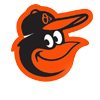


-1745819772711.png)
